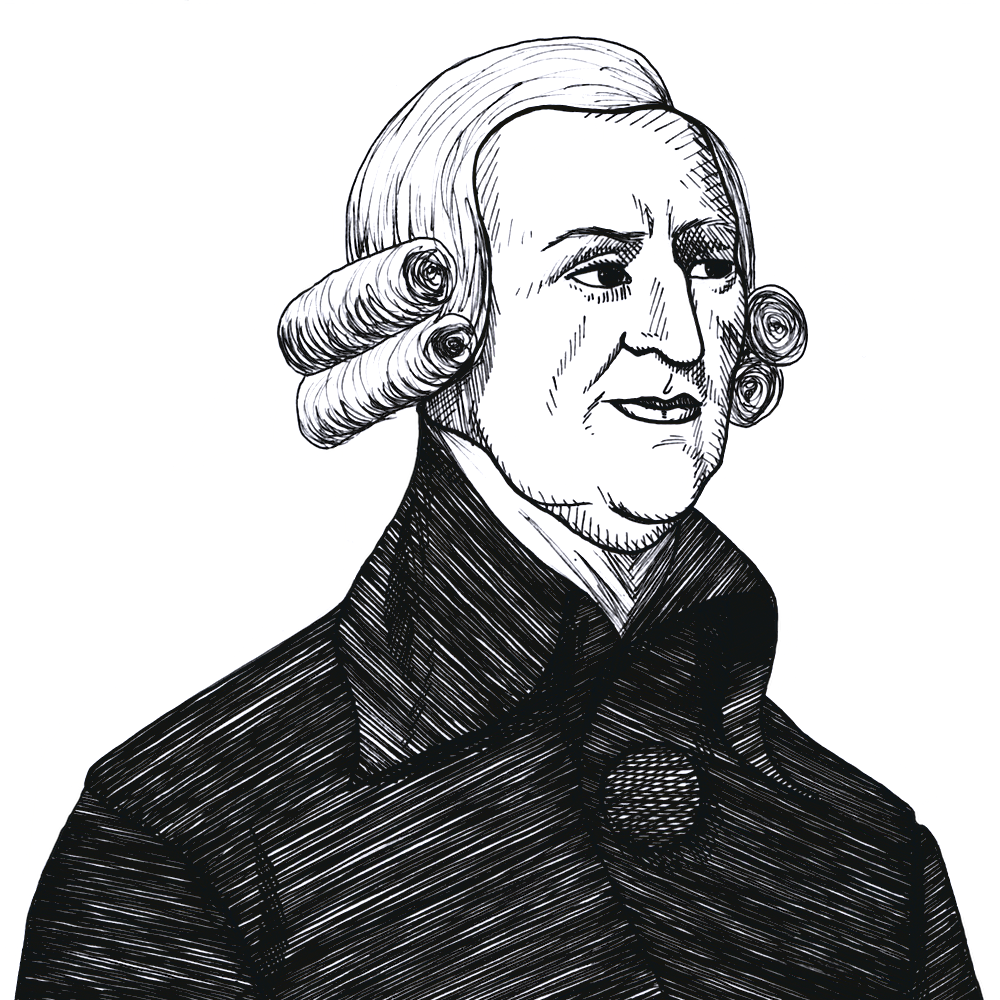
Adam Smith, Selfishness, and Sympathy
Found in: Theory of Moral Sentiments and Essays on Philosophical Subjects (1869)
The Scottish moral philosopher Adam Smith (1723–1790) was the author of two books, The Theory of Moral Sentiments (1759) and An Inquiry into the Nature and Causes of the Wealth of Nations (1776).
Smith begins The Theory of Moral Sentiments with this famous opening paragraph:
Philosophy
How selfish soever man may be supposed, there are evidently some principles in his nature, which interest him in the fortune of others, and render their happiness necessary to him, though he derives nothing from it except the pleasure of seeing it. (I.i.1.1)